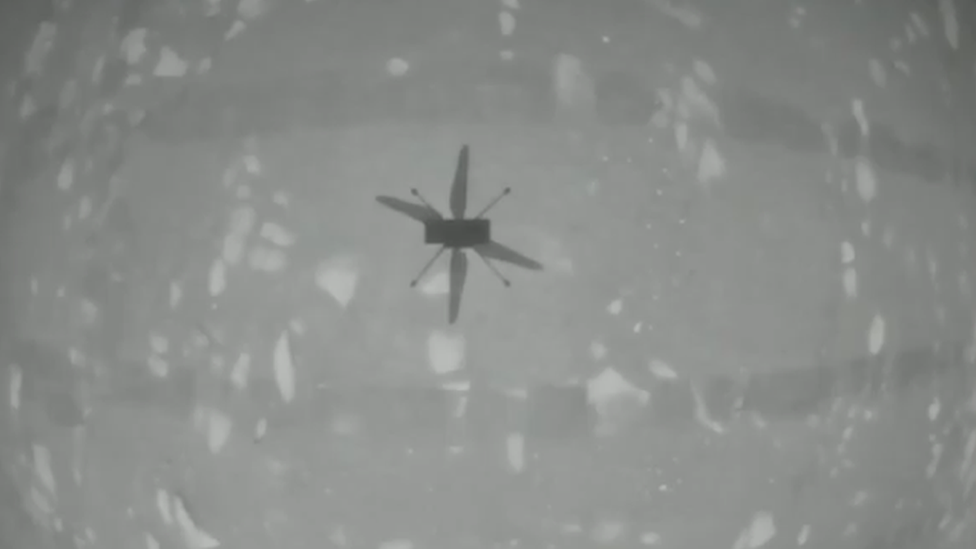Nasa Ingenuity: First ever helicopter flight on Mars successful
- Published
- comments

The chopper took this image of its own shadow on the ground
Nasa has successfully flown a helicopter on Mars.
The test flight made history in being the first helicopter to fly on another planet.
The demonstration saw the Mars-copter - called Ingenuity - rise to about 3m, hover, swivel and then land. In all, it managed almost 40 seconds of flight, from take-off to landing.
A delighted MiMi Aung, project manager for Ingenuity at Nasa's Jet Propulsion Laboratory in Pasadena said: "We can now say that human beings have flown a rotorcraft on another planet."
There were cheers in the control centre as the first photos of the flight arrived back on Earth.
Nasa Ingenuity: First ever helicopter flight on Mars
The Ingenuity Mars helicopter travelled on Mars underneath the Mars Perseverance Rover.
Getting the helicopter to fly however was quite difficult, as its never been done before.
Ingenuity has two cameras onboard - a black-and-white camera that points down to the ground, which is used for navigation, and a high-resolution colour camera that looks out to the horizon.
A navigation image sent back to Earth revealed the helicopter's shadow as it came back down to land. The results were sent via the Nasa Perseverance rover and a satellite on Mars that beamed them back to Earth.
The results showed that the test flight was a success.
There will now be four more flights with the aim of flying the helicopter a little further each time.
But why is it so hard to fly on Mars?
Say cheese! Here's the selfie Mars Perseverance took of itself with Ingenuity
The atmosphere on Mars is very thin. That means the helicopter doesn't have much air to "bite" into, so its rotors have spin faster than on Earth.
Two 1.2 metre long rotors spin in opposite directions at up to 2,500 rpm, that's fast!
The rotor tips will be moving at about two-thirds of the speed of sound on Mars, this should provide the lift Ingenuity needs.
Also gravity on Mars is much less apparent than here on Earth - there isn't as much as a pull and even though this might help, Ingenuity still had to be built very lightweight.
What's next?
It's hoped that if these test flights continue to go well, it will change the way we explore other worlds.
Nasa has already approved a helicopter mission to Titan, the big moon of Saturn.
The mission is known as Dragonfly, and is meant to land on Titan in the mid-2030s.
- Published23 February 2021
- Published5 December 2020
